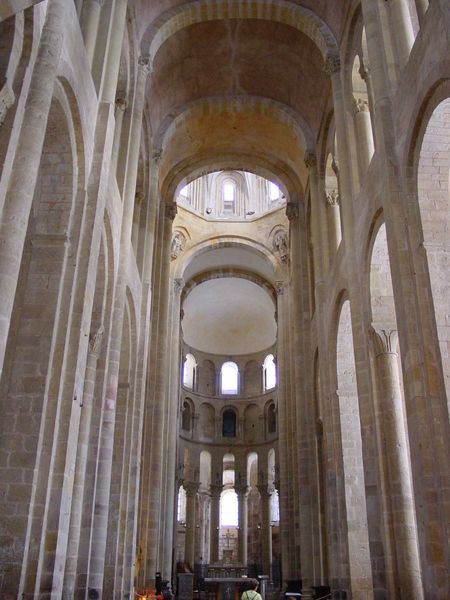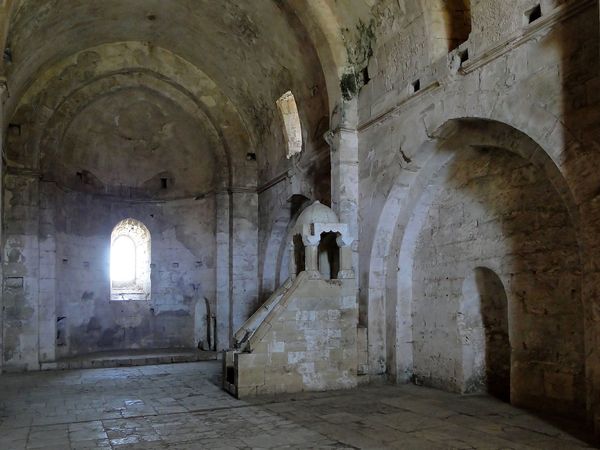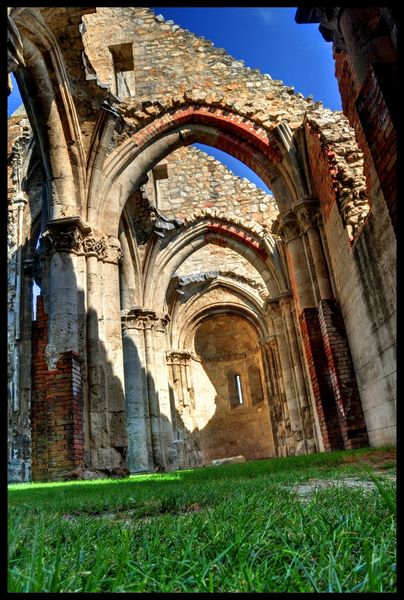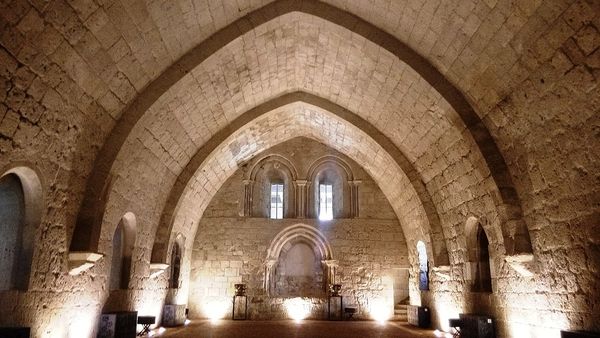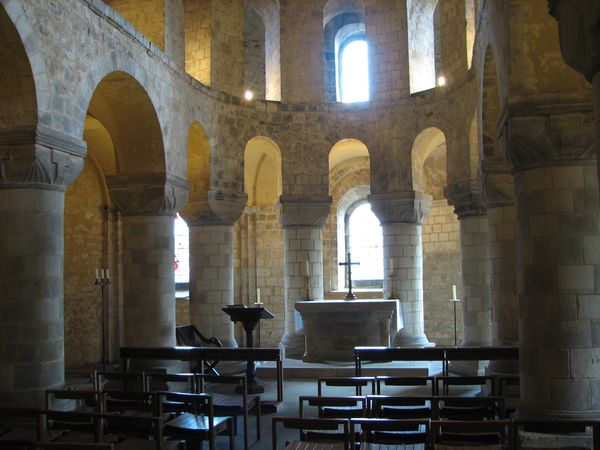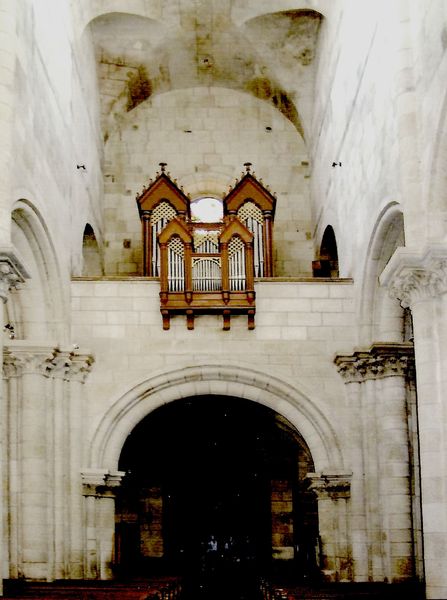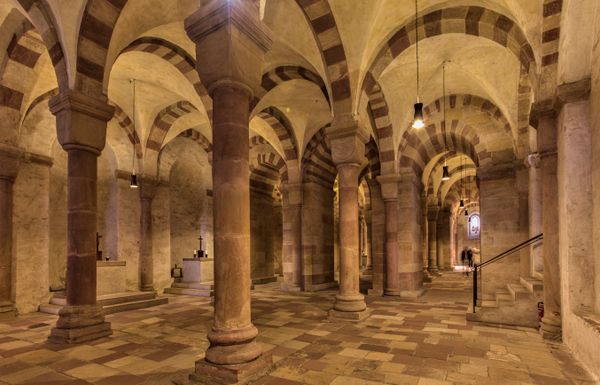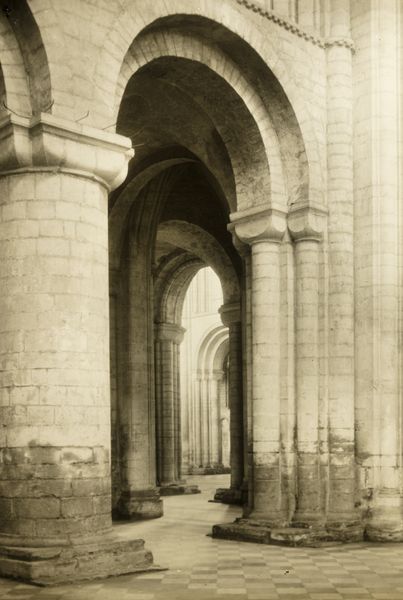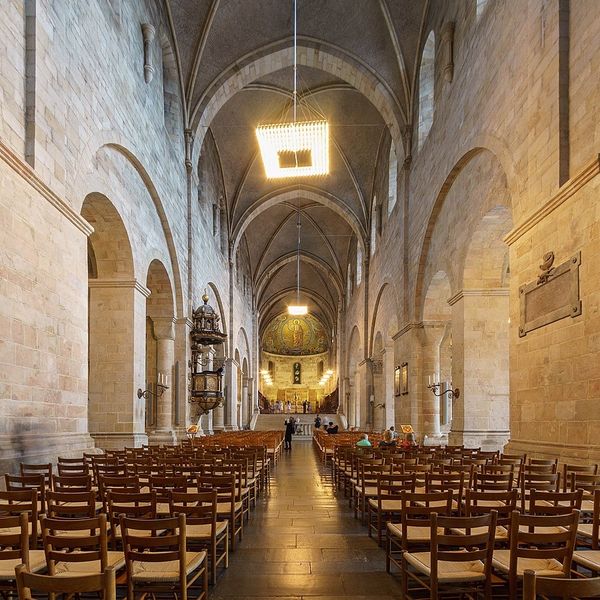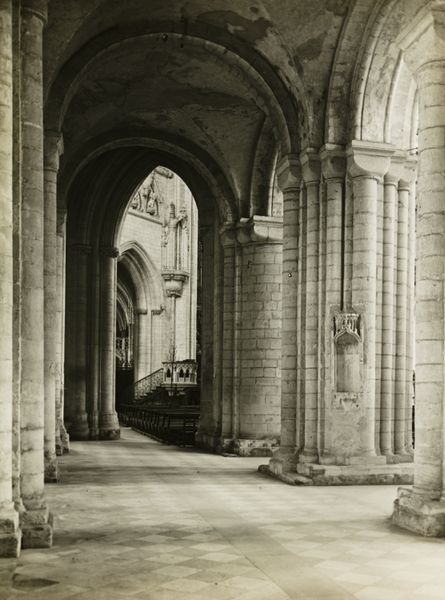
architecture
#
medieval
#
romanesque
#
arch
#
line
#
architecture
Copyright: Public domain
Editor: So this is a view of the Interior of the Church of Saint Anne in Jerusalem. It was built around 1138 and stands as a towering testament to Romanesque architecture. The sheer scale and the way light filters through feels very imposing and serene all at once. What historical weight do you think this interior carries? Curator: Look closely at the arches, rising in layered succession. They mimic not only heavenward aspirations but also the cultural memory embedded within each stone. How might the light, or the *absence* of light, in certain areas contribute to its symbolism? Editor: That's interesting. The darker corners certainly feel like places of introspection or even secrets, while the illuminated areas around the cross offer something more hopeful. Do you think the use of arches affects this duality? Curator: Precisely! The arch, a repeating motif, becomes a vessel carrying meaning across generations. Consider the psychology of the arch, both protective and expansive; its omnipresence emphasizes a continuous, inherited faith, linking present worshipers to countless generations. How do *you* feel the linear emphasis shapes your experience in the space? Editor: I guess I feel like I'm part of something much bigger. It almost makes you feel insignificant, yet connected. Curator: Indeed, and this powerful dichotomy— insignificance within immense history—is intentional. The artists embedded complex emotions, and memories, hoping they would surface hundreds of years later. Editor: Wow, I never thought about architectural space holding so much psychological meaning! Curator: Architecture speaks. Today, think about the ways modern architecture borrows, reimagines, or even rejects such loaded symbols. Thanks for considering those reverberations!
Comments
No comments
Be the first to comment and join the conversation on the ultimate creative platform.
